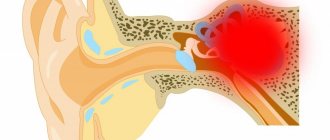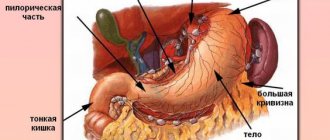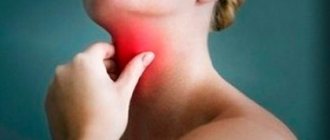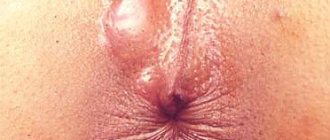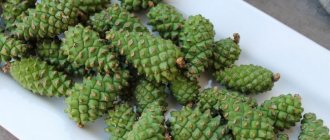Introduction
Lichen sclerosus (LS) is a chronic autoimmune dermatosis that occurs with focal skin atrophy and tissue damage in the anogenital area [1–3].
According to the general clinical classification developed by S. Peterson, LS is one of the clinical variants of limited plaque scleroderma (OS) [4]. A feature of the clinical course of LS is lesions of both the skin and tissues of the anogenital area, which can be isolated or combined [5]. Anogenital localization of LS occurs more often in women than in men, in a ratio of 3:1 [6, 7], in addition, dermatosis can develop at any age, but the peak incidence occurs in prepubertal age (9–11 years) and in menopause and /or postmenopausal period (45–55 years). In men, the disease usually develops after 40 years of age [6–8].
The issues of etiology and pathogenesis of LS have not been fully studied, however, it is known that the following important roles are played in the pathogenesis of the disease: genetic predisposition; inhibition of the activity of the pituitary-adrenal system; dysfunction of the thyroid and gonads; vaccination; injuries; acute and chronic infections (ixodid tick-borne borreliosis ( Borrelia burgdorferi
), scarlet fever, diphtheria, erysipelas, sexually transmitted infections (STIs)); human papillomavirus (HPV); herpes simplex virus (HSV); hepatitis B and C, etc., paraneoplastic genesis is also possible [9–14]. In recent decades, the development of LS of anogenital localization has been associated with the participation of estrogens and progesterone and their relationship with disturbances in the reaction of synthesis of collagen and connective tissue components [13, 14]. Literature data report that the free fraction of testosterone and androstenedione is significantly reduced in patients with genital LS, and abnormal activity of the 5α-reductase enzyme is also noted [14]. In a number of studies, the role of the leading factor is given to hypoestrogenism, since after the age of 30, the activity of steroidogenesis steadily decreases (by 1–3% per year) and by the age of 50 it decreases by almost 20% [14, 15]. The development of LS in the prepubertal period is in most cases associated with low estrogen levels and estrogen saturation of target organs [15]. However, with the development of LS in children, in rare cases, regression of pathological foci is possible, since the level of estradiol increases with age [15, 16]. A special role in the pathogenesis of LS is given to the pathological autoimmune process that develops in the walls of small vessels (capillaritis) and the interstitial substance of connective tissue, due to the high level of antigenic “collagen” stimulation [15–17].
A decrease in the activity of the hyaluronidase enzyme, the accumulation of mucopolysaccharides and progressive fibrinoid degeneration of connective tissue elements in combination with vasospasm due to the accumulation of serotonin lead to edematous-indurative changes [2, 10, 15]. The launch of a whole cascade of autoimmune, vascular and metabolic disorders leads to increased synthesis of collagen (types I, III, IV and VII) and other components of the extracellular matrix, obliteration of small vessels, which is clinically manifested by a progressive atrophic process of tissues [15–17].
In a number of cases, damage to the genital organs in LS can develop almost asymptomatically, especially at the onset of the disease [15]. The main complaints presented by patients with the steady progression of the process are soreness, paresthesia, tingling and “crawling” sensations, moderate itching, and then hardening of tissue in the genital area, hair loss and the appearance of cracks. As the disease progresses, along with increasing subjective sensations, patients develop a number of other qualitative symptoms. These include urinary syndrome, including persistent urinary tract infections, cystourethritis [16], gastrointestinal syndrome, manifested by pain during defecation, chronic constipation [17], and vulvovaginal syndrome, including dyspareunia and a whole range of dysfunctional sexual disorders [16, 17].
The typical clinical picture of LS consists of many small (3 to 5 mm in diameter), clearly contoured areas of atrophy that tend to merge. Elements of rashes can be scattered or grouped. Gradually, their number and size increase, they merge and form vast fields of thinned epidermis and atrophy, leading to partial tissue reduction. The color of the affected skin is whitish, with a pearlescent or liquid tint. The skin is difficult to fold, there is no hair on it, and apocrine and sweat glands are also absent [15–18]. The progression of scleroatrophic changes in the anogenital area in men, when localized on the skin of the penis and anus, leads to thinning of the foreskin, narrowing and stricture of the urethra. Paraphimosis and phimosis often develop [18, 19]. A serious complication of penile LS is squamous cell carcinoma, which accounts for up to 50% of cancer cases in the corresponding localization [19, 20]. In women, the progression of scleroatrophic changes in the anogenital area leads to loss of vulvar structure and its reduction. The vulva is easily injured and dyspareunia occurs. The folds of the labia are flattened and smoothed, the clitoris and labia minora are practically impossible to determine (like Hart’s line), due to severe tissue sclerosis, the entrance to the vagina narrows, the size of its vestibule and the external opening of the urethra decrease. Vulvar LS with chronic hyperkeratosis and erosions can be complicated by squamous cell carcinoma [19–21].
All these phenomena, in addition to unpleasant subjective sensations, cause patients significant moral suffering and significantly reduce the quality of life, since they are a serious cosmetic defect.
It is also important to note that patients with LS of anogenital localization are observed in obstetrics and gynecology clinics, where this disease is perceived only as an isolated lesion of the genitals, and not as a form of OS that requires a comprehensive examination and a systematic approach to treatment.
Purpose of the study:
to identify the frequency of damage to the anogenital area in the main clinical variants of OS, to establish differential diagnostic clinical criteria for damage to the anogenital area during OS, to improve the treatment method taking into account the anogenital localization and to evaluate the clinical effectiveness of the developed treatment method.
Diagnostics
Doctors at the Kuntsevo Multidisciplinary Center are ready to help with the treatment of Lichen sclerosus (kraurosis) of the vulva. The gynecologist will conduct a consultation, a comprehensive examination, and prescribe therapy at the appointed time. If necessary, he will develop an individual health restoration program.
Diagnosis of kraurosis begins with a personal conversation with the patient. The doctor asks about the presence and extent of symptoms. Then the gynecologist will offer to undergo a general examination:
taking blood tests (general, hormonal, biochemical);
- smear for cytology and bacteria;
- colposcopy;
- biopsy.
The doctor visually examines the patient's organs. If necessary, the doctor may prescribe instrumental examination methods.
Material and methods
In the clinic of skin and venereal diseases named after. V.A. Rakhmanova, for the period from 2021 to 2021, we examined 104 patients with an established diagnosis of OS (plaque scleroderma, linear scleroderma, LS, Pasini-Pierini atrophoderma). Of these, 86 were women (82.7%) and 18 men (10.5%). The age distribution of the patients was as follows: from 20 to 30 years - 18 people (17.3%), from 31 to 40 years - 18 (17.3%), from 41 to 50 years - 13 (12.5% ), from 51 to 60 years old - 26 (25%), from 61 to 70 years old - 23 (22.1%), from 71 years old and older - 6 (5.8%).
When conducting clinical and morphological phenotyping of all patients (n=104), we selected 62 patients with scleroatrophic lesions of anogenital localization.
Psychological help
Lichen sclerosus (kraurosis) of the vulva can become a factor in emotional and psychological distress. Representatives of the fair sex, and especially young girls, do not want to go to the reception for various reasons. The itching begins and the women don’t know what to think—either her husband brought it, or she picked it up herself.
Meanwhile, the symptoms intensify, unpleasant ulcers form, and it becomes impossible to have sex. Problems begin in the family and personal life. The constant itching and burning is simply driving me crazy. Women's health problems develop into nervous and mental ones.
To avoid bringing yourself to this state, contact the Kuntsevo Medical Center for help. Friendly service staff and the absence of queues will not leave you indifferent.
The doctor will listen to you carefully and help solve your problem. The specialist will work with you on the troubles that have accumulated during this time. You will start a new life! Kraurosis is a curable disease. The sooner you start getting healthier, the better.
Treatment method
The course of complex therapy includes: injections of benzylpenicillin at a dose of 500,000 units 4 times a day intramuscularly (i.m.) for 10 days (course dose 20 million units); pentoxifylline in a dose of 100 mg, 1 tablet 3 times a day for 1 month; bovhyaluronidase azoximer in the form of vaginal (for women) or rectal (for men) suppositories at a dosage of 3000 IU once every 2 days up to a course dose of 30 thousand IU; estriol (vaginal cream) - 1 application (corresponding to 0.5 mg estriol) 1 r./day for 4 weeks, then 1 application 2 r./week. within 2 months; gel with bacteriophages Fagogin 5–7 ml 3 times a day for 1 month.
All patients with scleroatrophic lesions of the anogenital zone were treated with a fractional CO2 laser (irradiation time 220 μs, fluence 3.9 J/m2, distance between points 70 μm). Three passes were performed in each session, with the laser set to low (10 W) 20 mJ/pixel, 2 Hz in the first, second and third sessions and medium (30 W) 10 mJ/pixel, 2 Hz in the fourth and fifth sessions. Application anesthesia (lidocaine + prilocaine). The exposure time was 25 minutes. The course of treatment ranged from 3 to 5 sessions with an interval of 30 days.
As an external treatment for scleroatrophic lesions of the anogenital zone in men, we used bovhyaluronidase azoximer using phonophoresis. The course of treatment consisted of 10–12 procedures with a frequency of 1–2 r./week.
Efficiency
The effectiveness of treatment methods will depend on the patient and the duration of the disease. The sooner a woman seeks help, the faster the recovery will go. During therapy, be sure to follow the basic rules:
- tune in to constant hygiene, without soap - with a herbal solution;
- wear comfortable cotton underwear;
- give up intimacy;
- at night, use a light blanket;
- exclude spicy and fatty foods from your diet;
- do physical therapy exercises if your doctor advises;
- take walks before bed.
Gradually you will rehabilitate your intimate life, which is important. The main thing is to listen to your gynecologist. And you will get better quickly.
Research results
Patients with the clinical variant in the form of plaque scleroderma amounted to 78 people (75%), linear scleroderma - 1 person (0.9%), Pasini-Pierini atrophoderma - 2 people (1.9%), LS - 23 people (22.2 %).
Scleroatrophic lesions of anogenital localization were observed in 40 patients with plaque scleroderma (64.5%), in 21 patients with LS (33.8%), in 1 patient with linear scleroderma (1.7%).
LS of anogenital localization was observed more often in women - 82.9% (51 patients) than in men - 17.1% (11 patients). The main group of patients with lesions of the genital organs occurs in the age median from 41 to 50 and from 61 to 70 years, which corresponds to the period of pre- and postmenopause. Age and gender characteristics of patients with LS are given in Table 1.
When analyzing the clinical features of the prevalence of scleroatrophic lesions of the skin and mucous membrane of the genital organs, we found that in 32.3% of cases the scleroatrophic process was localized only in the anogenital zone, and in 67.7% of cases the process was combined.
Thus, according to our data, in 32.3% of cases (n=20) an isolated lesion of the anogenital localization was observed in the scleroatrophic variant of OS. When analyzing combined lesions of the skin and anogenital zone, in 46.7% of cases (n=29), we identified a combination of two forms of OS: the plaque form on the skin and LS of the anogenital zone. In 19.4% of cases (n=12), we identified combined lesions of the skin and anogenital zone. In 1.7% of cases (n=1), lesions of the LS type in the anogenital zone were combined with lesions of the linear scleroderma type on the skin of the trunk.
When conducting a detailed analysis of the localization features of scleroatrophic lesions of the anogenital zone in women (n=51), it was found that lesions of the vulva occurred in 41 cases (80.4%), lesions of the clitoris - in 36 (70.5%), lesions of the perineal tissue - in 38 (74.5%), lesions of the perianal area in 24 (47%) (Fig. 1, 2).
Analysis of the characteristics of scleroatrophic lesions in men (n=11) showed scleroatrophic lesions of the glans penis in 8 cases (72.7%), lesions of the frenulum tissue - in 6 (54.5%), lesions of the skin of the shaft of the penis - in 3 (27 .3%), damage to the perianal area - in 4 cases (36.4%) (Fig. 3).
When analyzing concomitant chronic pathology in the studied patients (n=62), we found that in 71% of cases (44 patients) STIs and pelvic inflammatory diseases were detected, in 86.4% of cases (in 38 women) and in 17.1% cases (in 6 men). In 33.9% (21 patients) of cases, the following were found: HPV of high carcinogenic risk (16, 18, 31, 33, 35, 39, 45, 51, 52, 56, 58, 59, 68) and HSV types I and II - in 16 women (25.8%) and 5 men (8.1%) (Table 2).
Scleroatrophic lesions of anogenital localization were combined with bacterial vaginosis - in 27.4% of cases (17 patients), chlamydia ( Chlamydia trachomatis
) - in 24.2% of cases (15 patients), trichomoniasis (
Trichomonas vaginalis
) - in 17.7% of cases (11 patients), gonorrhea (
Neisseria gonorrhoeae
) - in 3.2% of cases (2 patients).
Scleroatrophic lesions of anogenital localization were combined with chronic persistent viral infection: HSV type II - in 16.1% of cases (11 patients), HSV type I - in 6.4% of cases (3 patients) (see Table 2).
It is also important to note that the presence of chronic persistent viral infection with HPV with a high oncogenic potential (16, 18, 31, 33, 35, 39, 45, 51, 52, 56, 58, 59, 68) in patients with scleroatrophic lesions of the genital organs causes significant interest due to the high risks of developing malignant transformation (see Table 2).
We analyzed concomitant chronic pathology in a group of patients (n=62) with lesions of anogenital localization. Of great interest are diseases of the pelvic organs, which were identified in 40.3% of cases (n=25): uterine fibroids - in 12 women, salpingoophoritis - in 5 women, salpingitis - in 3 women, cystitis - in 2 women; Prostatitis was detected in 2 men, prostate adenoma - in 1.
In addition, chronic focal infection of various localization was detected in 27.4% of cases (n=17): in women - rhinitis in 5, chronic tonsillitis - in 3, chronic pharyngitis - in 3; in men: rhinitis - in 3, chronic tonsillitis - in 2, chronic pharyngitis - in 1. Diseases of the cardiovascular system were detected in 19.4% of cases (n=12): in women - arterial hypertension in 7, arrhythmia in 1; in men - arterial hypertension in 3, heart failure - in 1. Pathology of the gastrointestinal tract and hepatobiliary system occurred in 3.2% of cases (n=2): in women - gastritis in 1, dyskinesia of the gallbladder - in 1. Pathology not detected in 9.7% of cases (n=6).
The effectiveness of the course of therapy was assessed by the positive dynamics of the skin process: a decrease in the density of lesions, the disappearance or blanching of the corolla of hyperemia, the absence of growth of old lesions and the appearance of new ones, a decrease in the size of old lesions, and a decrease in subjective sensations.
After the first course of complex therapy there was a break of 1.5–2.0 months, after which the next course of complex therapy was carried out. In the absence and/or insignificance of changes after a course of therapy, patients were prescribed a second course (the maximum number of courses did not exceed 5).
Thus, out of 62 patients with OS and damage to the anogenital zone, the majority of patients - 56.5% (35 people) required 3 courses of complex therapy, 16.1% (10 people) - 4 courses, 11.3% (7 people) - 2 courses, 6.4% (4 people) - 1 course and 8.1% (5 people) - 5 courses to completely stabilize the process.
Against the background of complex therapy, a decrease in the density of lesions was observed in 48 (77.4%) patients, blanching of the corolla of hyperemia - in 28 (45.1%) patients. The absence of growth of old lesions and the appearance of new ones was noted in 62 (100%) patients, a decrease in the size of lesions was observed in 39 (72.6%) patients (Table 3).
Analysis of the dynamics of subjective sensations showed a positive trend towards their decrease. Thus, before treatment, itching of the anogenital area occurred in 77.4% of cases, after complex treatment - in 24.2% of cases. Painful sensations in the lesions were observed in 59.7% of cases before treatment, and in 17.7% after treatment. Paresthesia before treatment was observed in 75.8% of cases, after treatment - only in 19.4% of cases. A feeling of tightness and dryness before treatment was observed in 80.6% of cases, after treatment - in 37.1%. Sleep disturbances were detected in 77.4% of cases before treatment, and in only 8.1% after treatment. Sexual dysfunction occurred in 51.6% of cases before treatment, and in 22.6% of cases after treatment (Table 4).
All patients (n=62) were asked to assess the degree of negative impact of the skin disease on various aspects of their life (family relationships with relatives, friends, work colleagues, sports, sex, social activity, etc.). quality of life index (QOL) before and after treatment. After a complex course of treatment, a significant increase in DIGI was noted in all patients with scleroatrophic lesions of the anogenital area (Table 5).
Reasonable restrictions for lichen sclerosus
Lichen sclerosus requires simple but important restrictions even after achieving remission during treatment at the Women's Health Resort Clinic.
If you have lichen, it is EXTREMELY UNDESIRABLE to take hot general baths, stay in the sun for a long time and sunbathe (regardless of the activity of the Sun, the presence/absence and type of bathing suit).
Thermal procedures and insolation (sunbathing in natural conditions and solariums) increases the production of estrogens (female sex hormones), the excess of which stimulates oncological processes.
Reviews about the treatment of lichen sclerosus
Kh.M., Nazran
I am so glad that I found you, you are such a kind, good, bright person. I tell everyone about you. And they also ask me what I found there in this Pyatigorsk. I answer, “I found myself a doctor.” Thank you very much for everything, happiness, health and all the best.
V.E., Kislovodsk
Thank you for the treatment you provided me. I wish you success and prosperity! It is very rare to find such professionalism. Your staff is very pleasant, the atmosphere fills with good emotions. Thank you for your health!!!
All reviews about the treatment of lichen
Leading specialists in the treatment of lichen sclerosus of the Southern Federal District
Ermolaeva Elvira Kadirovna is a well-known and recognized specialist in the North Caucasus in the field of diagnosis and treatment of kraurosis, leukoplakia, lichen sclerosus, Keir's erythroplasia and other diseases of the vulva. A good gynecologist, physiotherapist-resortologist, ultrasound doctor. Desperate and exhausted women turn to her.
Ermolaev Oleg Yurievich Candidate of Medical Sciences, gynecologist-endocrinologist with 25 years of experience and successful experience in treating lichen. Able to see relationships that elude others.
About the doctors of the Clinic in detail...
| INTERNATIONAL RECOGNITION of the reputation and achievements of the Women's Health Resort Clinic in the development and implementation of effective and safe treatment methods and the quality of medical services provided is the AWARDING of the Women's Health Resort Clinic in Pyatigorsk with the SIQS International QUALITY CERTIFICATE in the field of medicine and healthcare. International Socratic Committee, Oxford, UK and Swiss Institute for Quality Standards, Zurich, SWITZERLAND. |
The resort clinic for women's health operates both for paid services and in the voluntary health insurance system.
Each doctor at the Clinic has long-term experience, several specializations and is able to comprehensively assess the situation.
The resort women's health clinic is open 7 days a week and on holidays:
Monday - Friday from 8.00 to 20.00, Saturday, Sunday, holidays from 8.00 to 17.00.
Treatment by appointment no later than 3 days in advance by multi-channel phone number 8 (800) 500-52-74 (calls within Russia are free), or +7 (for international calls).
| ONLINE information about the treatment of lichen in Pyatigorsk can be found at REGISTER ONLINE for treatment here. REGISTER online for treatment here. You can buy coursework for treatment by phone or here. |
Booking
The doctors of the Women's Health Resort Clinic have gained a LOT of successful EXPERIENCE in treating lichen with natural medicines and resort factors.
We accept women from all cities of Russia, near and far abroad.
The spa clinic for women's health facilitates the accommodation and accommodation of women, women with children and couples during examination and treatment.
ACCOMMODATION in Pyatigorsk is NOT INCLUDED IN THE PRICE of the course of treatment for lichen and is paid separately.
About living conditions and transfer from Mineralnye Vody airport and Pyatigorsk railway station in detail in the article “Accommodation”.
If you need to book accommodation, please coordinate your arrival date no later than 7 days in advance.
We are AT YOUR FULL DISPOSAL if you have any doubts or wishes.
- About the Clinic
- Clinic team
- Reviews about treatment in our Clinic
- What is homeopathy?
- How to prepare for an appointment with a gynecologist?
Our Lichen Treatment Clinic is open 7 days a week and on holidays:
Monday - Friday from 8.00 to 20.00, Saturday, Sunday, holidays from 8.00 to 17.00.
Treatment by appointment via multi-channel telephone number 8 (calls within Russia are free), or (for foreign calls).
| ONLINE about the treatment of lichen in Pyatigorsk at [email protected] BOOK ONLINE for treatment here. Buy coursework for treatment by phone or here. |
Booking a course
Subsections
- Program No. 1. Treatment of inflammatory and infectious diseases of the pelvis
- Program No. 2. Treatment of urinary incontinence, prolapse and prolapse of the uterus and vagina
- Program No. 3. Treatment of female infertility
- Program No. 4. Treatment of erosion, endometriosis, leukoplakia, dysplasia, polyps, cervical cysts (uterine cysts)
- Program No. 5. Treatment of uterine fibroids
- Program No. 6. Treatment of cervicitis and endocervicitis
- Program No. 7. Postpartum rehabilitation and wumbling
- Program No. 8. Treatment of chronic cystitis
- Program No. 9. Treatment of severe menopause
- Program No. 10. Treatment of mastopathy
- Program No. 11. Treatment of endometriosis
- Program No. 12. Treatment of hydrosalpinx
- Program No. 14. Comprehensive treatment of polycystic ovary syndrome
- Program No. 15. Preconception preparation for IVF, ICSI
- Program No. 16. How to remove belly fat
- Program No. 17. Treatment of kraurosis
- Program No. 18. Treatment of leukoplakia
